Time is running out to avert starvation. Unless urgent action is taken, the continued drought in East Africa could come to resemble the one in 2011, which killed about 260,000 people in Somalia alone, according to a New York Times report.
Ethiopia has experienced three severe droughts due to failed rains since October 2020 and climate scientists say that La Niña conditions are causing a fourth season of below average rainfall. Due to conflict and the climate crisis, this fourth season of drought is expected to be the worst in 40 years.
The Red Cross is on the ground, providing life-saving assistance. In addition to delivering aid to help with the immediate crisis, building community resilience is key to sustainable solutions.
When a disaster is on this scale, it can be hard to remember that behind each statistic are real people. In these photos we see the struggles of people living each day in this crisis, and the reality of what it takes to build that resilience.
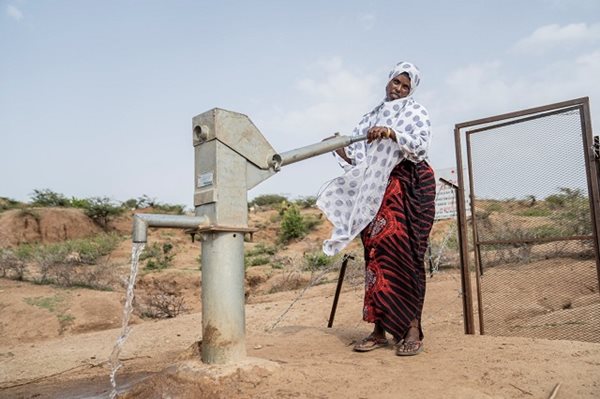 In Halima’s kebele (a municipal area in Ethiopia, like a neighbourhood or ward), one borehole and five hand-dug wells were installed in 2021 as part of a Water, Sanitation and Hygiene (WASH) project. This was a joint effort from the International Committee of the Red Cross, Netherlands Red Cross and Ethiopia Red Cross Society and included training volunteers in hygiene promotion.
In Halima’s kebele (a municipal area in Ethiopia, like a neighbourhood or ward), one borehole and five hand-dug wells were installed in 2021 as part of a Water, Sanitation and Hygiene (WASH) project. This was a joint effort from the International Committee of the Red Cross, Netherlands Red Cross and Ethiopia Red Cross Society and included training volunteers in hygiene promotion.
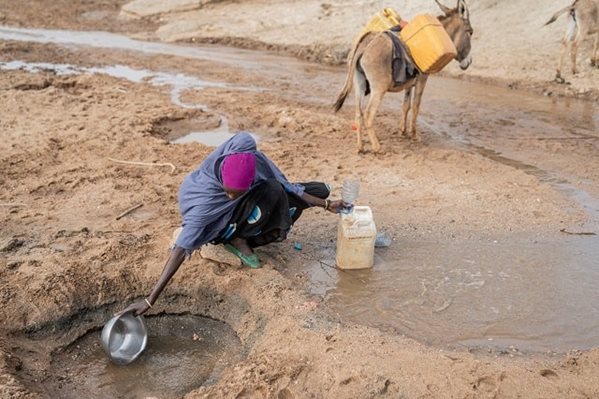 Asha, gathers water from the river near her home in Gursum Woreda (a woreda is a larger area, that is divided into kebeles), Fafan Zone, Somali region. Asha’s kebele is one of a number in Gursum that have benefitted from the borehole and hand-dug wells.
Asha, gathers water from the river near her home in Gursum Woreda (a woreda is a larger area, that is divided into kebeles), Fafan Zone, Somali region. Asha’s kebele is one of a number in Gursum that have benefitted from the borehole and hand-dug wells.
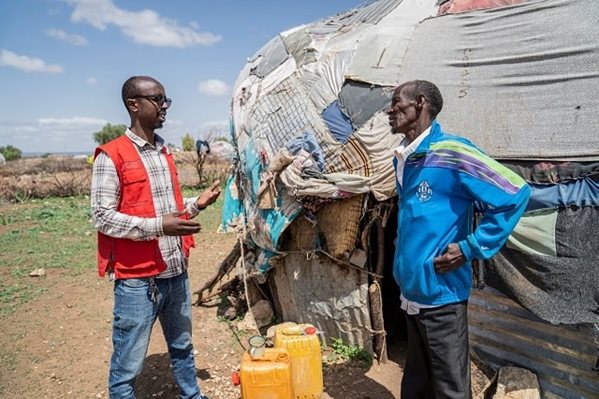 Abdifatah, a WASH Project Coordinator with the Ethiopian Red Cross Society, chats with Abdi, who uses a water spreading weir near his home in Shebele Woreda, Jijiga, Somali region. This project uses a series of micro-dams, installed by the Red Cross, which are designed to slow down water run-off and prevent the short, extreme rainfalls from eroding top-soil. Because the water remains within the area of the little dams, the ground water levels also rise. The Red Cross is further investing in sustainable nature-based solutions in Ethiopia, through planting drought tolerant trees and income-generating crops.
Abdifatah, a WASH Project Coordinator with the Ethiopian Red Cross Society, chats with Abdi, who uses a water spreading weir near his home in Shebele Woreda, Jijiga, Somali region. This project uses a series of micro-dams, installed by the Red Cross, which are designed to slow down water run-off and prevent the short, extreme rainfalls from eroding top-soil. Because the water remains within the area of the little dams, the ground water levels also rise. The Red Cross is further investing in sustainable nature-based solutions in Ethiopia, through planting drought tolerant trees and income-generating crops.
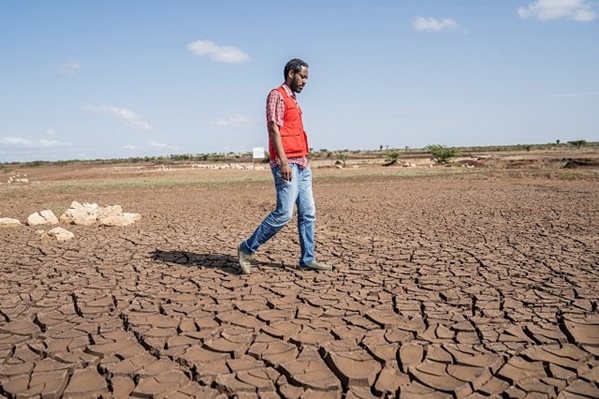 Ethiopian Red Cross Society worker Aseged walks through a desiccated landscape.
Ethiopian Red Cross Society worker Aseged walks through a desiccated landscape.
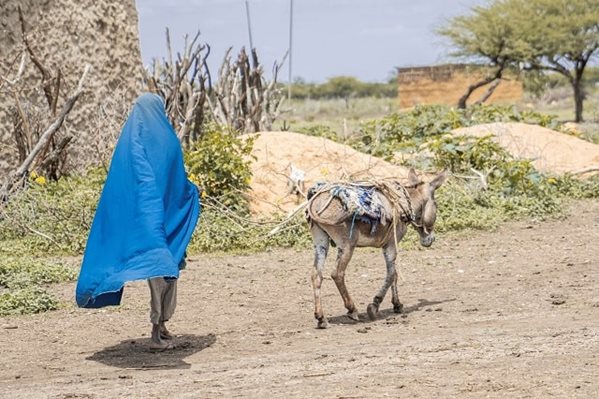 A girl walks a donkey in the kebele of Fayanjabso, south of Babile, Somali region. This settlement hosts a number of people who have been internally displaced as a result of the prolonged drought. Many families have lost their livestock and have moved in search of support, clean water, and access to markets. According to the Internal Displacement Monitoring Centre, there were over five million people internally displaced in Ethiopia in 2021, the highest amount ever recorded for any country in any given year.
A girl walks a donkey in the kebele of Fayanjabso, south of Babile, Somali region. This settlement hosts a number of people who have been internally displaced as a result of the prolonged drought. Many families have lost their livestock and have moved in search of support, clean water, and access to markets. According to the Internal Displacement Monitoring Centre, there were over five million people internally displaced in Ethiopia in 2021, the highest amount ever recorded for any country in any given year.
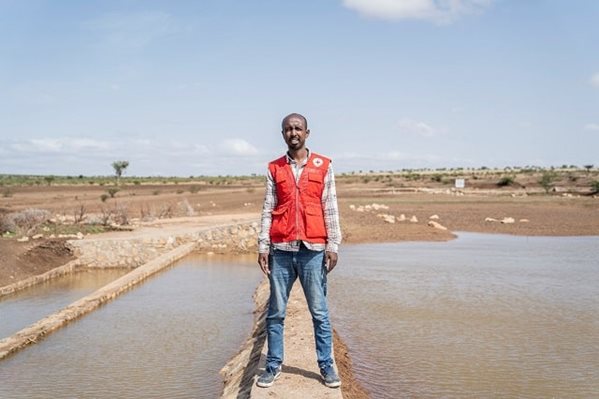 Abdifatah, a WASH Project Coordinator with the Ethiopian Red Cross Society, stands on a water wpreading weir near Shebele Woreda, Jijiga, Somali region.
Abdifatah, a WASH Project Coordinator with the Ethiopian Red Cross Society, stands on a water wpreading weir near Shebele Woreda, Jijiga, Somali region.
If you’re interested in supporting the work of the Red Cross around the world, you can make a donation to the International Programs Fund.
Related:

